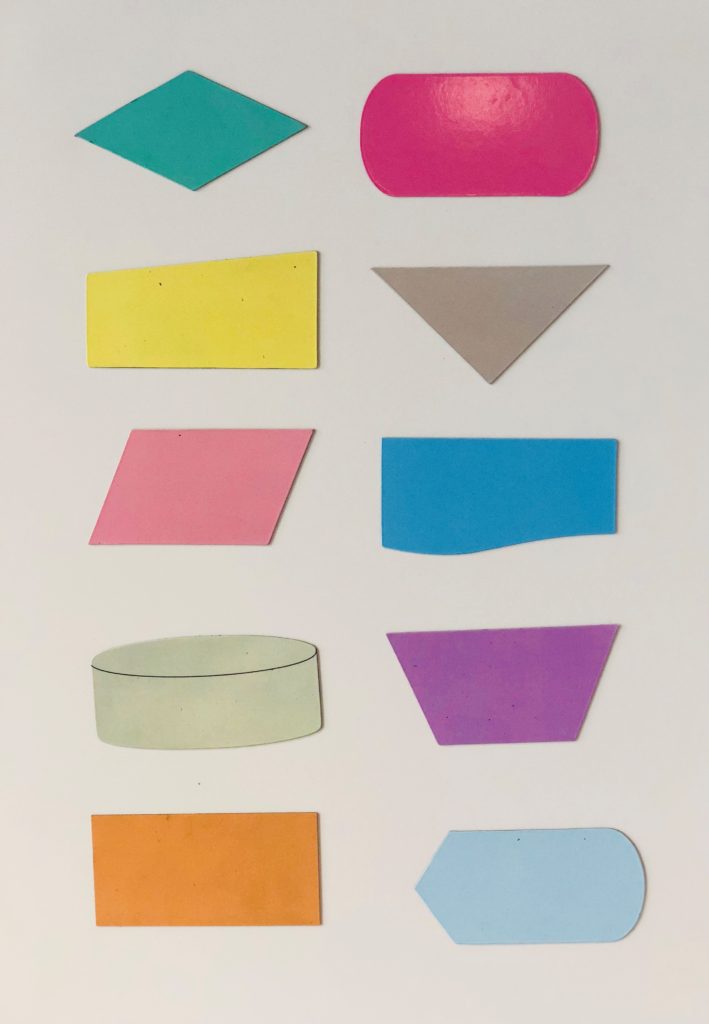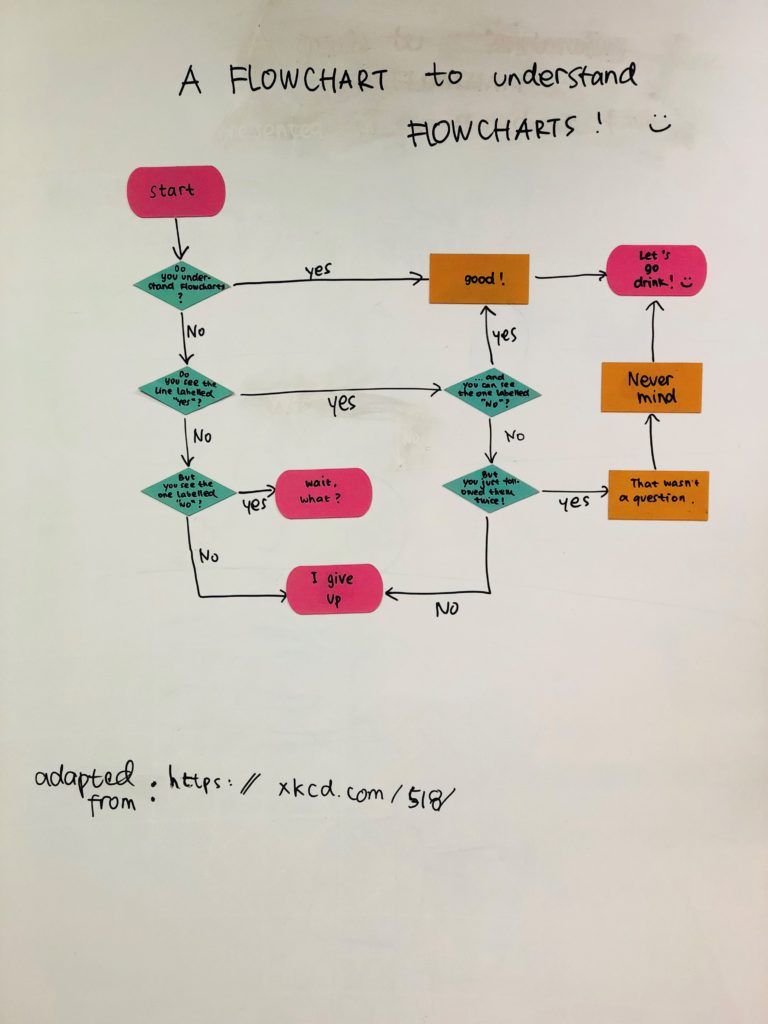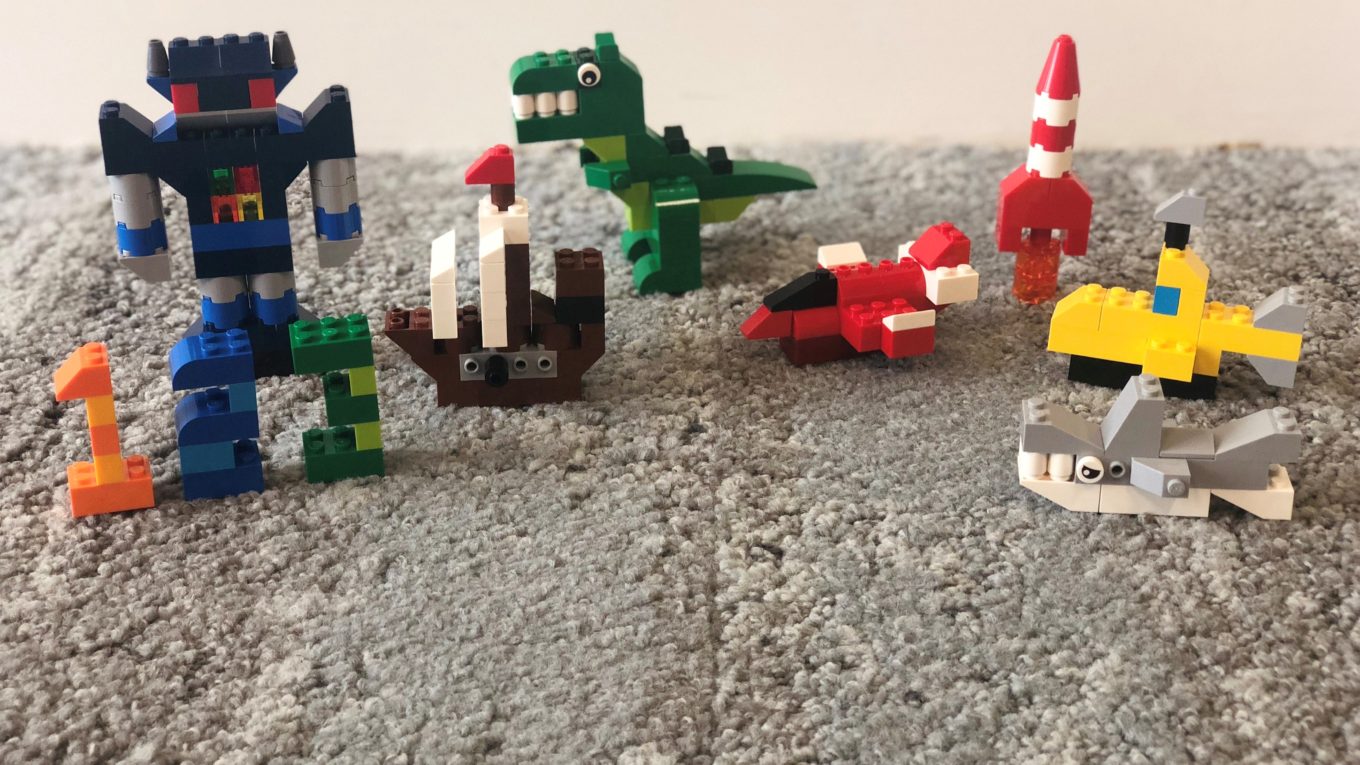Using props in the classroom
Guest blog by Matt Dyki and Maggie Singorahardjo
Interactive White Boards, COWS (Computers on Wheels), CRS (Classroom Response Systems) are technologies that we may be using or used by others we know. Even terms like flipped classrooms and blended learning have technical implications. But do we need to use technology? Could we have an interactive class without technology? Could we get students off their devices?
This past semester we had the luxury (the horror?) of teaching a new core subject (AIS/Business Process area) due to a course restructure. The content area had shifted from first year to second year, rebadged (new subject name and code) and we were given a license to play around and think outside the box. We took this literally.
Examples of props and how we use them
- Props we used included “fridge” magnets cut in the shape of flowchart symbols and colour-coded for easy identification. This got students up on the white board in groups exploring different ways to present a flow chart and interpret narratives.
- LEGO was used to replicate the production and conversion process, groups needed to order the type of LEGO they needed to obtain raw materials to produce a model.
- Paper was even used to produce documents so controls such as sequence check and batch totals could be undertaken.

Flowchart magnet shapes 
What we found
The majority of students got involved, it got them out of their seats and interacting with each other. This also added an element of novelty in the classroom.
Students were given the opportunity to use the props to explore different ways the process worked, or experience the process as such they were able to develop their own understanding to achieve the learning objectives of the topic.
This also provided a basis for further discussion, either with the individual student groups, or the class as a whole. It also provided a concrete example for students to review a particular topic area.
How do determine what props to use
In deciding what props to use we brainstormed ideas that would achieve the learning outcomes for the topic area. The starting question was how we get students out of their seats and/or off their devices to achieve the learning outcome, whist having some fun at the same time.
We also asked ourselves how we can replicate the real world in a way that is both scalable and repeatable and fits into a 50 minute tutorial. This is where having props that can be reused come into the forefront.
For us we questioned how we could do what we, or we heard someone else was doing, differently e.g. we heard about someone using making sandwiches to demonstrate costing as the trigger for a discussion that ended up with us using LEGO.
How to get started
Props can easily be scalable, provided you have enough for all your classes, and we recommend providing a set of teaching notes/instructions for any tutors you may have.
Student feedback
While the feedback we received from students was overwhelmingly positive, there is still the odd comment that the activities where ridiculous and wanting a straightforward answer. However, what is most important is that the classes are memorable to them (even if negative). If they remember the class its easier for students to recall the concepts taught.
Most students certainly did enjoy the activities as demonstrated in this short video of the end product.
Matt Dyki
Matt is a Teaching Fellow at The University of Melbourne. Matt is involved in a number of initiatives around online accounting education. He has introduced innovations such getting students to use SAP and business simulations to provide an experimental learning experience.
Profile
Maggie Singorahardjo
Maggie is a Teaching Specialist at The University of Melbourne. Maggie’s focus is on providing an interactive student experience within tutorials, for which she was recognised with the Dean’s Excellence in Tutoring Award in 2018.
Profile
